ALBUFEIRA
Albufeira is the tourist reference of the Faro district in the Portuguese Algarve, Currently it is a place designed for tourists and in summer it is the point where thousands of foreign tourists are concentrated, so it is not a good option if what we are looking for is tranquility. A great attraction of this place is, definitely, its historic center, where we can stroll through pedestrian stone streets between white houses, what's more, you will find numerous shops with souvenirs and places to eat.
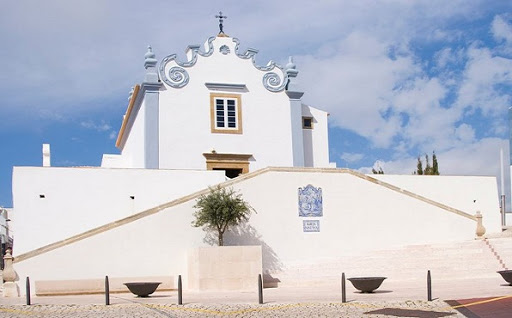
CHURCH OF SANTA ANA
We can highlight the Church of Santa Ana, built in the 18th century. The altar of this church is made of wood and is the most beautiful ornament in the entire temple. Monument you have to see in Albufeira. In addition, The Clock Tower is also noteworthy,an ancient tower that is visible from almost every part of the city. In its highest part it has a large platform that will show us impressive views.
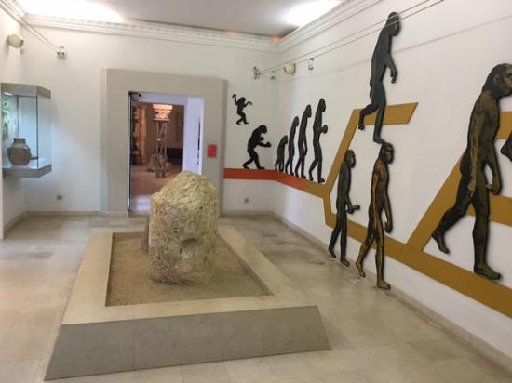
ARCHEOLOGICAL MUSEUM OF ALBUFEIRA
One of the highlights of Albufeira is the Albufeira Archeology Museum, also located in the old town. It is installed in the old Town Hall, in full República Square. It is a fairly complete museum, composed of four historical nuclei oriented to different eras.
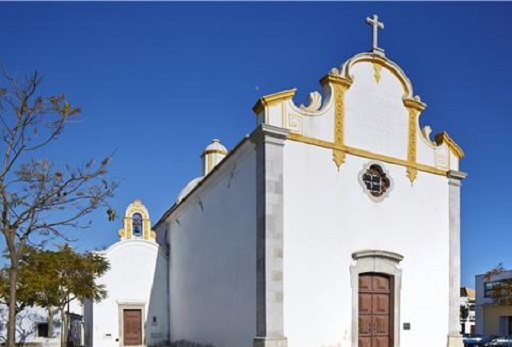
THE HERMITAGE OF SAO SEBASTIAO
The Ermita de Sao Sebastiao is another of those temples to visit in Albufeira. It is an original temple built in the 16th century. Considering your age, it is not surprising that in the 18th century it received a major architectural renovation. Currently, despite all the episodes suffered, the hermitage has an impressive manueline door. A key point where we can take thousands of snapshots. Inside this hermitage there is another attraction to highlight, the Albufeira Museum of Sacred Art.
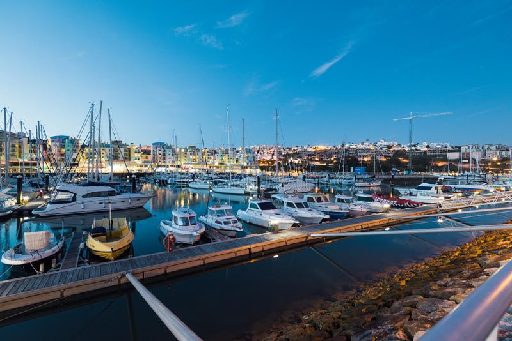
PORT OF ALBUFEIRA
An excellent recommendation would be to visit the current Albufeira marina or port in Albufeira.. It was inaugurated in the year 2003. It was designed to be very spacious and have various green areas and a great promenade. This marina has a wide range of hotels, stores, restaurants, villas and a leisure center.
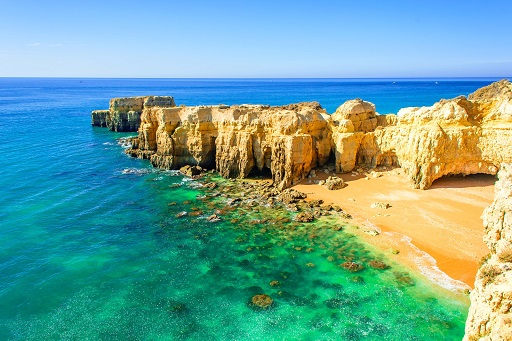
BEACHES
Of course, Albufeira's beaches are one of the area's greatest attractions, among which stand: Oura Beach, Fisherman's Beach, Galé Beach, Falesia Beach, Olhos de Água Beach, Sao Rafael and Praia dos Salgados.
LAKES AND PONTA DA PIEDADE
In Lagos, everything seems to invite the beach and simple pleasures. But there is also a history of sailors and pirates, The result of a complicity with the sea that endures in the colorful fishing boats that bring the fish to the fish market or in the marina where yachts from all over the world rock.
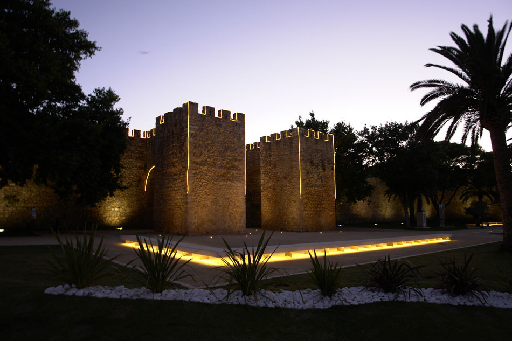
GOVERNORS 'CASTLE
Although they were built on previous constructions, some of the main monuments belong to this period, like the Castle of the Governors. Or the city walls and the Fort of Ponta da Bandeira that protected it from the invaders, especially of corsairs, and that, actually, offer beautiful panoramic views over the town and the sea.
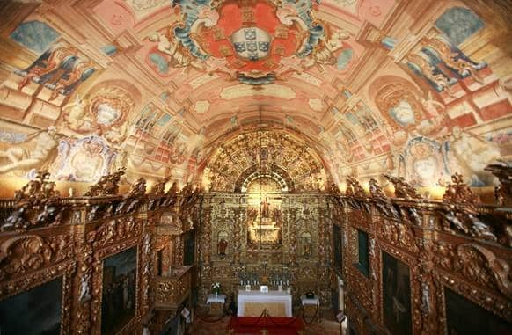
THE CHURCH OF SAN ANTONIO
The Church of San Antonio surprises us with the richness of its interior covered with gilt carving and tiles. As a curiosity, the image of the saint that gives him his name enjoys the rank of lieutenant-general, honor obtained because this temple served as a chapel to the Infantry Regiment. Next to, the Municipal Museum has interesting archeology and sacred art nuclei.
And we cannot stop tasting its gastronomy. Fish and seafood are the main ingredients of various delicacies. Sweets are another specialty and among them the dom-rodrigos stand out, recipe of the sisters of the Convent of Nuestra Señora del Carmen.
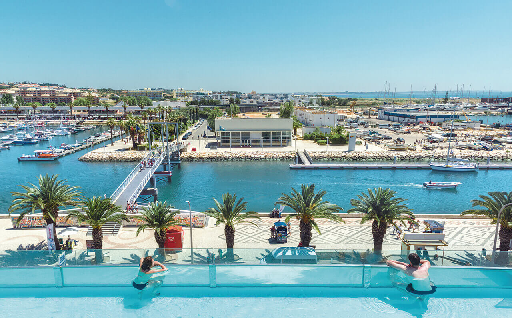
DISCOVERIES AVENUE
From the long Avenida dos Descobrimentos we can see the skyline of the city and the marina, full of life and animation. This road leads us to the sea and the beaches, one of the most beautiful in the Algarve, so many times distinguished by international entities and magazines. Al east fall Meia Praia, a long sandy area with almost five kilometers that ends in the Alvor estuary. Towards the other side there are smaller sandy areas bathed by transparent waters, to which the rocks sculpted by erosion add a dazzling beauty. So are the beaches of Batata, Pinion, Doña Ana and Camilo, reached from the city center.
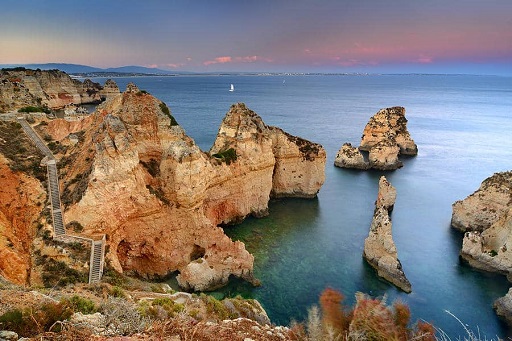
POINT OF PITY
Point of Pity, the emblem of the region, it is an impressive rock formation with cut-out shapes and excavated grottos that you will be able to appreciate in all its splendor during a boat trip. cane field, Porto de Mós and Praia da Luz complete this offer, which also includes small stretches of sand that are difficult to access, some of which can only be reached by sea. They are small paradises waiting to be discovered.
FARO
Despite being the capital of the Algarve, Faro is often overlooked by visitors to the Algarve, heading directly to seaside resorts, missing out on knowing a charming city. Faro is divided into 2 zones: the modern city and the ancient city, also called Cidade Velha or Vila Adentro.
La Vila-Adentro is a medieval walled nucleus that is located around an old port and the Cathedral. It is a relic of the past that reflects the short-lived golden age of the city during the 16th century. It is especially fascinating to walk through the network of its narrow cobbled streets, that preserve architectural samples of several centuries old and interesting museums, as well as attractive cafes and shops.
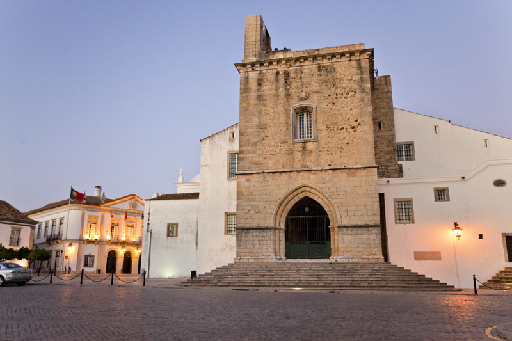
CATHEDRAL
Cathedral, built in the 13th century but rebuilt after the Lisbon earthquake. The interior shows a fusion of Gothic styles, renaissance and baroque. The visit consists of 3 parts: church, the ascent to the bell tower (mirador) and the cathedral museum. In the outdoor area, the Chapel of Bones hits.
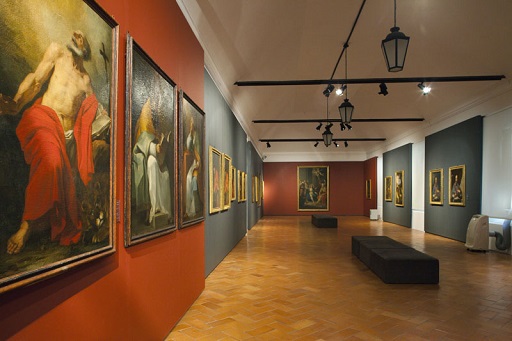
ARCHEOLOGICAL MUSEUM
Archeological Museum. This museum, which occupies the Renaissance cloisters of the old convent of Nossa Senhora da Assunçao(declared a National Monument), It is one of the most beautiful in the Museum collections mainly refer to the areas of Archeology, History of Art and Ethnography, from prehistory to the 18th century. Among its best pieces are a huge Roman mosaic floor, a collection of arabic oil lamps, and a gallery dedicated to 16th century Italian painting.

CHURCH OF THE THIRD ORDER OF SAN FRANCISCO
Church of the Third Order of San Francisco, built at the end of the 17th century and rebuilt at the end of the 18th. Its interior walls are decorated with impressive tile murals that recreate the life of San Francisco. The altarpiece in the main chapel deserves special attention, the tiles that line the vault, the side altars, the carved lining of the dome of the transept, Y 4 18th century Italian paintings, work of Marcella Leopardi.
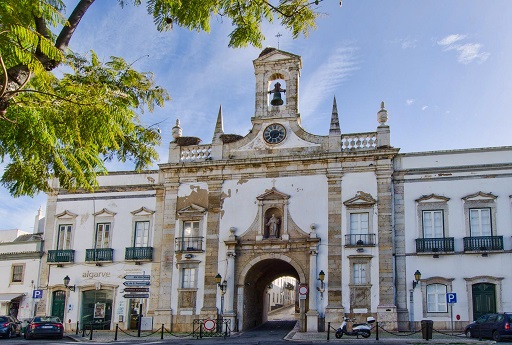
ARCH OF THE VILLAGE
Arco da Vila (National Monument). This monumental neoclassical arch was inaugurated in 1812 and it is the main gateway to Vila Adentro. It houses a niche with the image of Santo Tomás de Aquinoy was made by the Italian architect Francisco Xavier Fabri.
Inside there is a door in the shape of a horseshoe arch from the 11th century, whose construction is attributed to the Arabs. It is the only one in the Algarve of its kind.
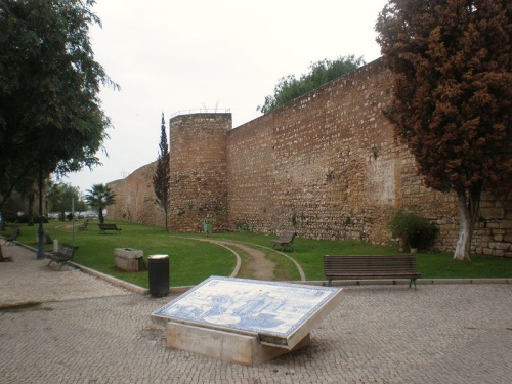
WALLS AND TOWERS
The Vila Adentro is located inside an oval-shaped wall whose origin dates back to the Roman period., although it was modified and enlarged during the period of Arab occupation (siglos IX a XI), period from which they are preserved 2 albarrana towers that served to protect the entrance to the Arco do Repouso. The rest of the fortifications are from the 16th century, with the exception of the Byzantine towers that show an original octagonal design.

RUA DA SAN ANTONIO AND PALACIO DOS BÍVAR
Rua da Santo Antonio is a pedestrian street full of shops and restaurants, where city life unfolds, both day and night. The Palacio dos Bívar, this old residence from the end of the 18th century is considered the best example of neoclassical architecture in the Algarve.
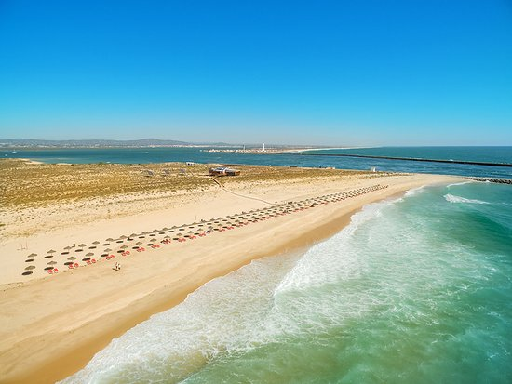
ILLA DESERTA
Illa Deserta Beach (Deserted island). This gigantic spit of sand (almost 10 Km) that links the dunes of the Ria Formosa Natural Park is very popular, especially in summer. Accessed by sea, from the pier of Porta do Sol. The Ria Formosa Natural Park protects an extensive area that includes a lagoon that lies parallel to the coast along some 60 Km. It includes islets of sandy dunes, pantanales, salt flats and freshwater lakes that are home to a great variety of flora and fauna, and multiple trails to walk.
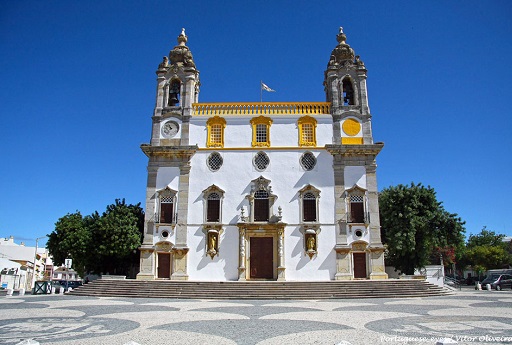
CHURCH OF CARMEN
This huge baroque temple founded in 1713 by Bishop D. Antonio Pereira da Silva houses the 9 images used in the Procissão do Triunfo, carried out by Manuel Martins, as well as multiple gold-carved altarpieces.
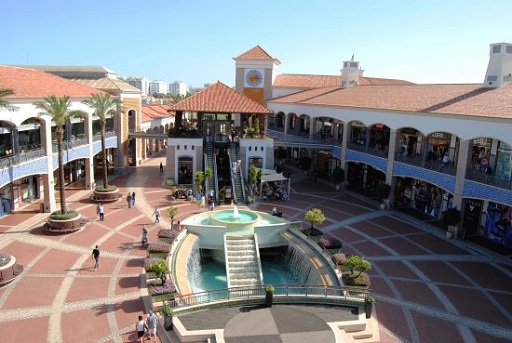
FORUM ALGARVE
With an architectural design inspired by the historic center of Faro, the Forum Algarve is the largest shopping center in the region. Its over 200 stores, boutiques, hypermarket, and family leisure center attract locals and tourists alike.
TAVIRA
Tavira is a town that has managed to preserve its traditional character and boasts of having a quiet pace of life in a region crowded with tourists. Precisely one of the charms of Tavira is having maintained the structure of the fishing village that gave rise to the modern city, with its traditional low houses and cobbled streets, with a very nice historical center for the walk. It is not a city of hotels, nor mass tourism.
RIA FORMOSA NATURAL PARK
One of the keys to having managed to respect this character is found, paradoxically, in one of the aspects that has been able to put back the massive tourists: the existence of the Ria Formosa Natural Park, that separates the center of the eastern Algarve cities from the nearby beaches with marshes and canals that can only be traveled by boat and that have, what's more, with a large number of bird species.
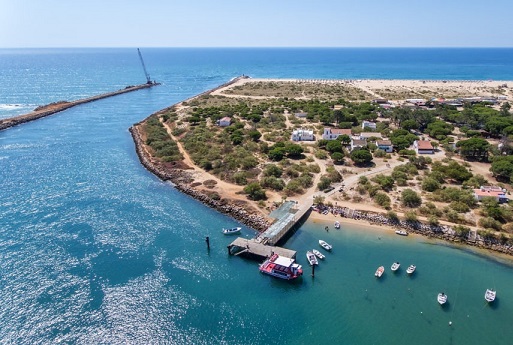
TAVIRA ISLAND
In Tavira, there is no choice but to figure out how to reach its wonders, since we won't be able to use a car for everything, how to get to the island of Tavira, where it is necessary to take one of the two boat routes that cross the estuary and then walk to the beach along a path full of beach bars and small restaurants. Yes indeed, the prize for those who dare to do it is worth it: an island without cars, with dozens of kilometers of excellent beaches, not overly frequented.
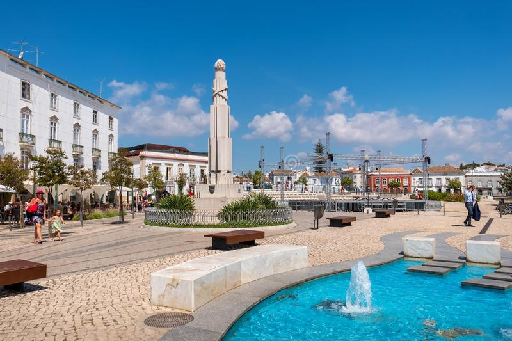
REPUBLIC SQUARE
Most of the life of the city is concentrated on both sides of the river. On the west side is the Republic Square, with the Town Hall and the renovated building of the docks and the fish market. Next to them, a wide street, Parallel to the river, it offers a great variety of restaurants that specialize in fish or seafood cataplanes., typical dishes of the region. In this area we also find several places of cultural interest in the form of churches or the remains of the old castle, today converted into a small botanical garden.
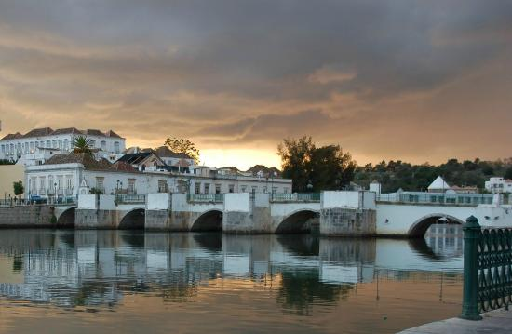
GILAO RIVER
The Gilao River is the landmark of the city center and splits the town of Tavira in two. There are several possibilities to cross it, but the most common is the so-called Roman Bridge that does not look like that time thanks to a later reform, but that is one of the references of the city.
LOULÉ

MARKETS
Loulé is also famous for the Moorish-inspired Municipal Market of Loulé, and where you can find fresh food and Portuguese specialties. Another famous market here is the Loulé Gypsy Market. It takes place every Saturday and is already well known to tourists. It takes place on Rua da Nossa Senhora da Piedade. Here you can see a map of how to get from the municipal market to the gypsy market area on foot.
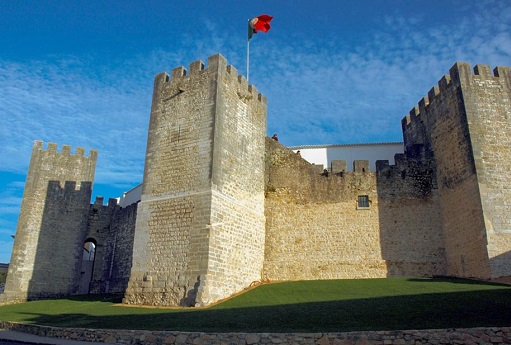
CASTLE OF LOULÉ
What remains of the Castle of Loulénos reveals the importance of the building and the city in the Islamic period of the Algarve. Today there are three towers and part of the wall. Despite being a small complex, worth a short visit. The price to access both (Museum + castillo) does not exceed € 2.
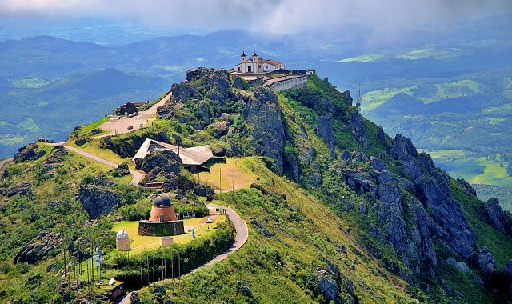
SANCTUARY OF OUR LADY OF PITY
The Sanctuary of Nossa Senhora da Piedade is one of the most important Marian temples in Portugal. On the top of a hill near what is now the center of Loulé, a chapel to Our Lady of Mercy was built in 1553. Today you are here, next to the chapel, the particular church that you can see from anywhere in the city.

Carnivals
The Loulé Carnivals take place in February, for three days in a row, and they are full of color and their parade through the center of the city makes it seen as one of the best in Portugal.
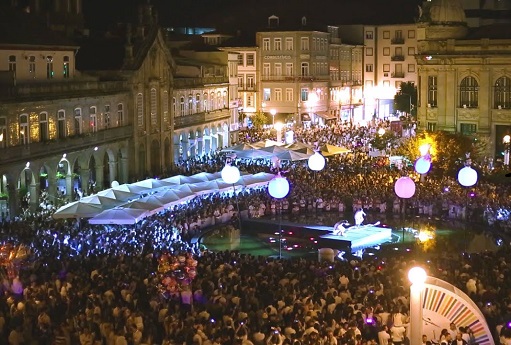
WHITE NIGHT
Every year, at the end of august, a party is held in Loulé to say goodbye to the summer. It is called Noite Branca, and tourists and locals dress in white, the premises are decorated with the same color and the municipality adorns the city for the celebration.
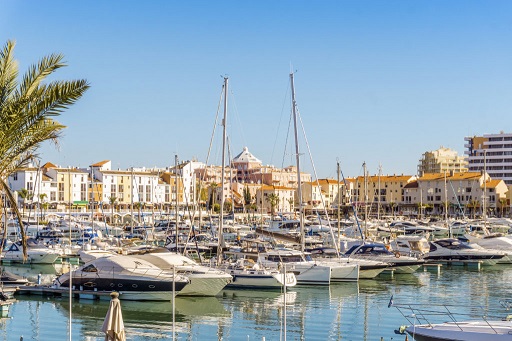
VILAMOURA
Vilamoura is a tourist complex belonging to the council of Loulé. This private resort is one of the most exclusive vacation destinations in Europe. Complete with beautiful beaches, golf courses, casino, marina, bars and discotheques.
SILVES
Silves is a small town with a charm and a magical atmosphere that takes you back to the Middle Ages. Narrow streets, cobbled and steep, crowned by a medieval castle worth visiting. Silves is famous for its Medieval Market, held in mid-August, where absolutely the whole town with its castle, they dress in period clothes and transport the town back to medieval times, with performances, food and candy stalls,… An unforgettable experience.

SILVES CASTLE
The best tourist attraction in Silves is the imposing castle that dominates its horizon. The castle dates from the 7th century, but the red brick battlements that can be seen today are from the 12th century, in full struggle between the Christian Crusaders and the African Arabs. This constant fighting led to the construction of the castle's incredible fortifications and ingenious methods to survive a prolonged siege., among them a cistern fed by rainwater that was so effective that it was used until the decade of 1920.
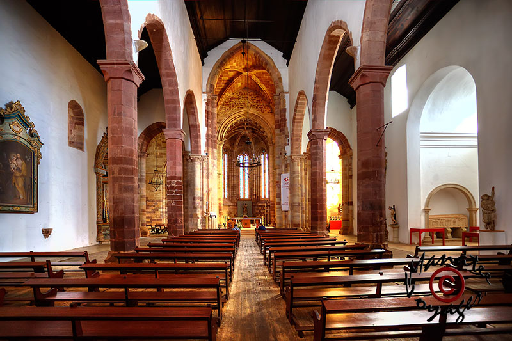
SILVES CATHEDRAL
It is a gothic style temple, influenced by the aesthetics of the Monastery of Batalha, with modifications and restorations made later, in which the apse stands out, composed of three chapels and the portico of the main facade inserted in an alfiz (a molding frames the sculptural ensemble). The entrance to the church is through a lateral portal on the south side, rococo style, built in the late 18th century, known as Porta do Sol.
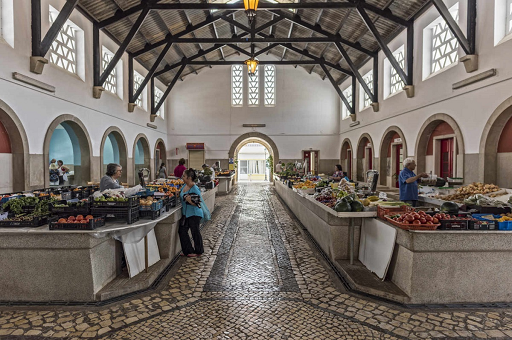
MUNICIPAL MARKET
Near the river you can live the daily life of the locals. You will find typical products, quality and fresh in different stalls scattered around the small market. Good quality of fruits and vegetables.
Besides these places, as in all the Algarve, we find wonderful cliffed beaches such as Praia de la Roca, Barranco and Tres Castelos.
SAGRES
The first time we visited Sagres and Cabo San Vicente, gives us the impression that it is the end of the world, because its huge cliffs overlooking an open and infinite sea offers us a strange, and in turn, nice feeling that can give us a rare feeling of peace, great place to reflect. Many of the inhabitants of this area still dedicate themselves to the sea and the land, so when eating, freshness is the main characteristic of what you will find in its traditional restaurants.
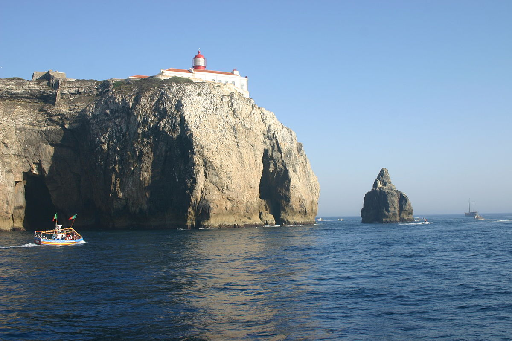
CABO SAN VICENTE LIGHTHOUSE
The Cape of San Vicente rises with cliffs of up to 60 meters above the sea level, and until the century 14 it was considered as "the end of the world". Today you will find one of the brightest lighthouses in Europe, there was a Franciscan monastery that paid homage to Saint Vincent, whose remains were supposedly discovered in these lands. Cabo de San Vicente is located 10 minutes by car to the Fortress of Sagres.
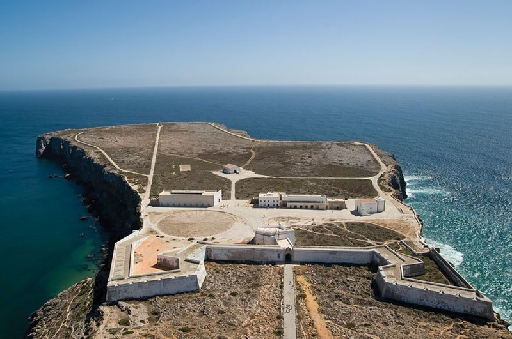
FORTALEZA DE SAGRES
The fort or Fortress of Sagres, It is located at the tip of the cape. From here you have an incredible view of Cabo de San Vicente and the coast around. Here they took refuge and repaired the boats. There was also a hospital run by the Franciscan order. Inside the fortress, there is also a monastery and the Church of Our Lady of Grace, built on the old hermitage of Santa María.
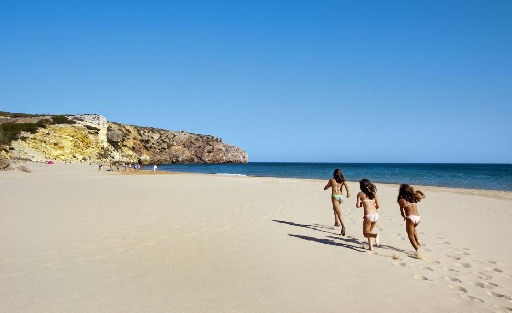
BEACHES
This region has a large number of beaches and they are much more desolate than the rest of the Algarve, we highlight: Bunk bed, Burgau, Old Huts, Boca do Rio, Salema, FIG tree, Furnas, Zavial, Ingrina, Barranco, Mrtinhal, Mareta and Tonel. Its waters are a bit colder and generally more choppy, but it compensates with less people and an undoubted beauty. By your disposition, Sagres is the only place in Portugal with two coasts, a southern coast and a western coast.
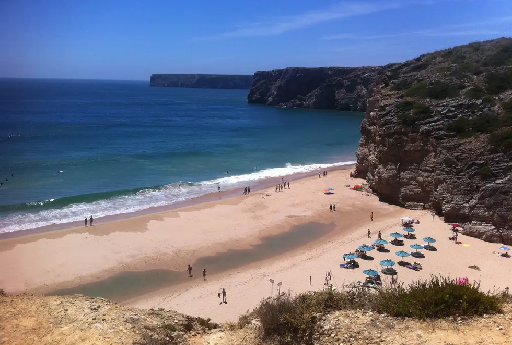
NATURAL PARK OF THE COSTA VICENTINA
The Costa Vicentina Natural Park is located in this region, which occupies approximately 80 km of natural landscape, more than 100 flora species considered endemic, rare or localized, and a significant number of endangered animal species. Here it is possible to see eagles, lynxes, otters, foxes, hedgehogs and more. Paradise of bird watching.
QUARTEIRA Y VILAMOURA
Between Vilamoura and Faro, Quarteira was one of the first tourist centers to be developed in the Algarve. A small fishing village was replaced by huge tower blocks and modern hotel buildings over the years 70 Y 80. There are blue flag beaches in both directions, a luxurious marina, more restaurants and bars, and ten golf courses. On the other hand, Vilamoura itself is a tourist complex built from the decade of the 70 20th century. Excellent hotels and urbanizations, and golf courses of international prestige provide a complete offer to those who want to spend a few days of rest by the sea..
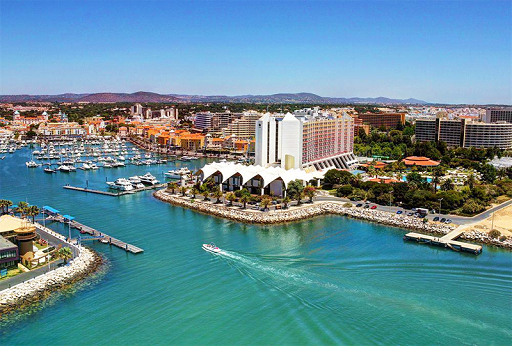
MARINA DE VILAMOURA
The marina, the largest in Portugal, is the main point of animation, not only for those who arrive by boat, but for all those who spend their holidays in this area and come here in the late afternoon or at night to enjoy an ice cream or dinner. It is also the ideal place to make purchases, with a wide variety of shops that offer from local crafts to the most famous international brands. Regarding the evening entertainment, there is no shortage of bars and clubs with the best DJs and the Vilamoura Casino, that we can get adrenaline to the maximum.
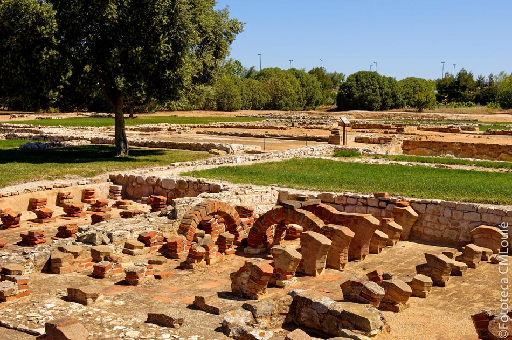
CERRO DA VILA
Cerro da Vila is made up of two residences, easily identifiable by its polychrome mosaic floor and vestiges of stucco on its walls, but also bathrooms, a necropolis and a tank system that most likely would have been for salting fish. In the interpretation center you will discover how the site was occupied after the Roman Empire, by the Visigoths and then by the Moors.
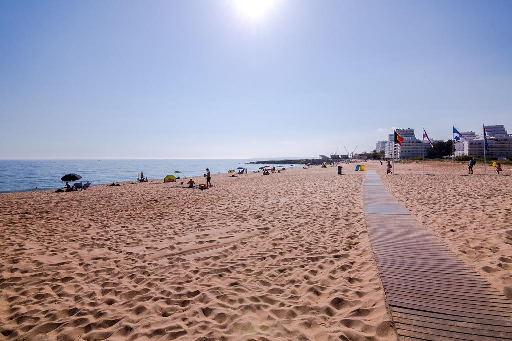
BEACHES
During the day you can practice numerous activities on beaches with warm waters and golden sand, how are you tennis, horse riding, sailing, windsurf, jet ski, parasailing, boat travel, sport fishing, the difficult thing will be to choose between its multiple options to enjoy. The best beaches in Quarteira and Vilamoura are: Vilamoura Beach, Falésia, Quarteira and Almargem.
PORTIMAO
Portimão is the largest city in the western Algarve and a traditional shipbuilding center, sardine fishing and fish processing. If we go further into the city, we will find pleasant pedestrian shopping streets, a series of historic buildings and a varied selection of cafes, bars and restaurants specializing in fresh fish and seafood.
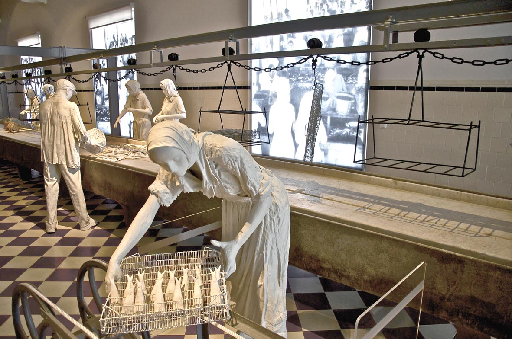
MUSEO DE PORTIMAO
It is an old canning factory, on the very shore of the river Arade. A large building that maintains the ‘Conservas La Rose’ sign on its façade.. What is today one of the most attractive Museums in Portugal was, since the end of the 19th century, a canning company curiously founded by a family of Spanish origin.: Feu Brothers. The 'La Rose' canning factory was built by Antonio and Cayetano Feu, that had a great influence on economic life, political and social of this city. The museum, which opened its doors in 2008, has not only maintained the facade and the structure of the building; when you are inside you perceive that the spirit of the factory is still alive with a perfect recreation of the environment.
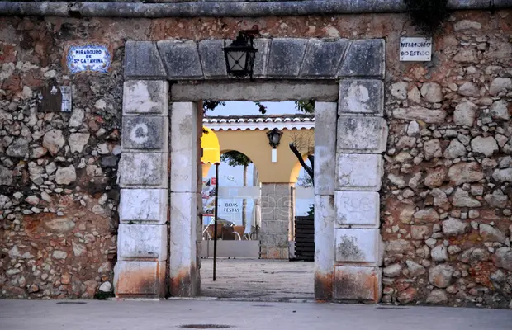
SANTA CATALINA FORTRESS
In a commanding position on a hill to the east of Playa da Rocha, next to the Arade River, this fortification defended the city and the Arade River bar, cooperating with the Fort of São João del Arade, on the opposite bank of the river in Ferragudo. This fortress was built during the reign of Felipe III, in the place where there was already a chapel dedicated to Saint Catherine of Alexandria, which still remains the primitive gothic portal inside. At the moment, the outbuildings of the fort are used as a place of recreation for tourists who demand the Praia da Rocha and the adjacent Marina de Portimão.

MARKET
The Municipal Market of Portimão, on São João de Deus Avenue, It is a must for those looking for the freshest of the day with the highest quality, coming directly from the sea and the orchard, with that special service.
Portimão Municipal Market hours:
Monday to Friday from 7:00 a.m. a 2:00 p.m. and of 5:00 p.m. a 8:00 p.m.
Saturdays and holidays 7:00 a.m. a 2:00 p.m.
Closed on Sundays.
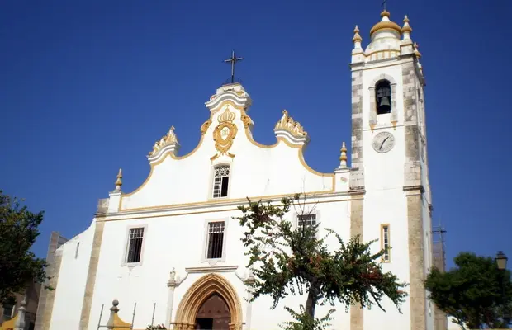
CHURCH OF OUR LADY OF CONCEPTION
The Mother Church of Ntra Sra de la Concepción is located in the upper area of the historic center of Portimão. It was built in the year 1.476 on the initiative of Gonçalo Vaz de Castelo Branco, although it was rebuilt in the 18th. The most recent reform is the one that is being carried out now, so it is closed to the public and worship. From its initial construction a beautiful Gothic doorway with decorated capitals and gargoyles is preserved. Outwardly the most striking thing is the baroque bell tower, that with its great height is visible from different points of the city. It has a rectangular plan and three naves.

MARINA DE PORTIMAO
Almost all the major cities on the Algarve coast have a marina-like area called Marina. Apart from the port, Las Marinas are made up of another area where housing constructions are of a high social level. Within the same enclosure there are also restaurants, boutiques etc. Due to its location, the place at the mouth of the river Arade is exceptional. To the left and a few meters away we find Prai da Rocha, the Fortress of Santa Catalina and opposite on the opposite bank of the river with Ferragudo and its Fort of San Juan.

HISTORIC CENTER
The city center is full of shops of all kinds. It is perfect to enjoy the beach, take a walk at the end of the day and have a snack (has a wide range of restaurants, cafés, bars and clubs). Stores during the summer open late at night.
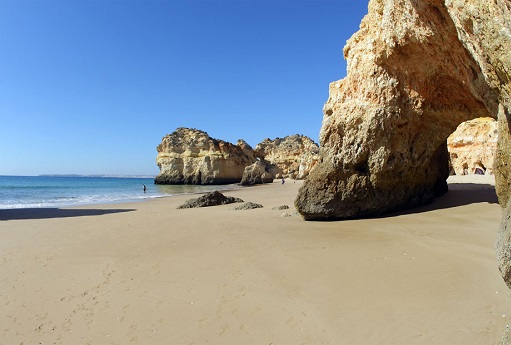
BEACHES
Among the most outstanding beaches of Portimao we find: Stone beach (a 3 kms), Tres Irmaos Beach, Alemao Beach, Marina Beach, Praia dos Tres Castelos, Praia dos Careanos, Praia do Vau, Alvor beach and Torralta beach.
CARVOEIRO
Carvoeiro has some of the most beautiful beaches in the region, with cliffs, rocks and caves that add an aura of mysticism to the Algarve coast. No list of the best activities to do in Carvoeiro would be complete without the suggestion of spending a day at one of the wonderful beaches in the area., like Praia do Carvoeiro, la cercana Praia de Benagil or Praia da Marinha. Marinha has been voted as one of the 10 most beautiful beaches in Europe and one of the 100 most beautiful in the world, so it is definitely a must see on any trip.
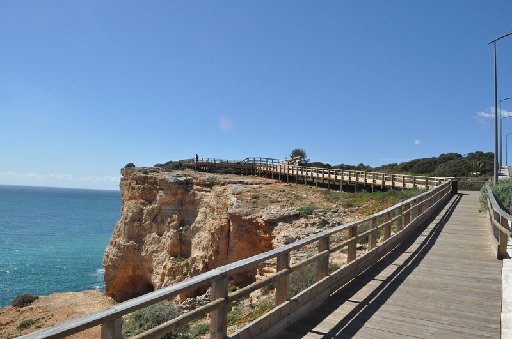
MARITIME WALK OF CARVOEIRO
The seafront of Carvoeiro, built on the cliffs that surround the town, offers a magnificent view of the Atlantic and some of the most beautiful beaches in Europe. Stroll along the path and be amazed by the rock formations and warm colors of the Carvoeiro area.
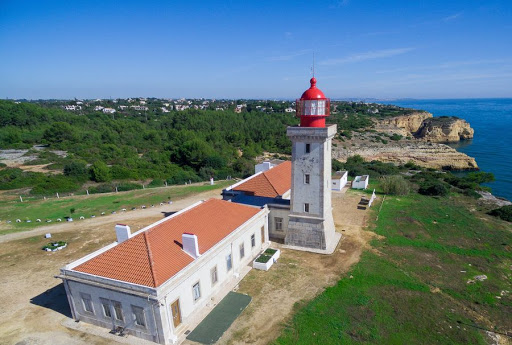
ALFANSIN'S FARO
This beautiful lighthouse, now open to the public on Wednesdays between 2:00 pm and 5:00 pm, was erected on top of a rocky promontory in the year 1920. In addition to guiding ships at sea, the Alfanzina lighthouse also allowed local fishermen to fish for squid at night. We recommend a visit to the lighthouse on a clear day due to the impressive scenery it offers.
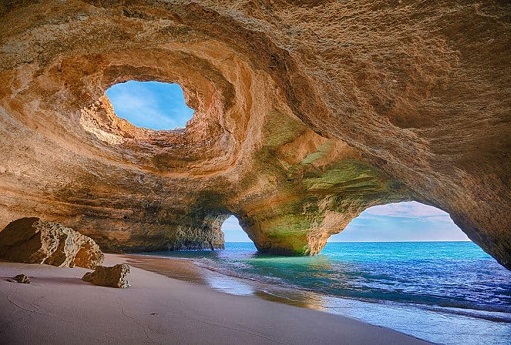
BENAGIL CAVE AND DRY ALGAR
Thousands of tourists visit the caves of Algar Seco every year. It is difficult to describe the beauty one faces when entering the Benagil cave, For this reason, we highly recommend a visit to this spectacular place.. Carvoeiro is known for its rock formations, that were eroded over thousands of years by natural factors that today have left impressive spectacles on view. Taking part in a boat tour is a great way to discover these fantastic natural wonders and also visit the famous Benagil cave.
BEACHES AND COVES OF ALGARVE
Algarve is a paradise, the portuguese paradise. Its beaches represent the perfect summer postcard, the background image with which we all want to remember our holidays in the sun. Throughout the coast that it occupies, Algarve is drawn with beaches of various shapes and sizes. And in each of these beaches we will find characteristics that we will like more or less. There are small and rarely visited beaches, huge deserted beaches and others with more movement and service.
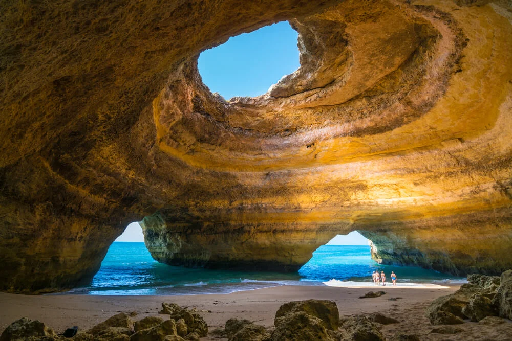
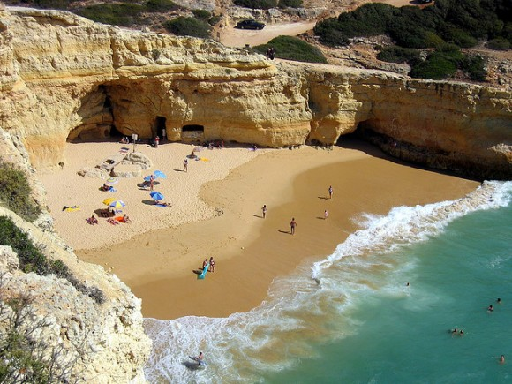
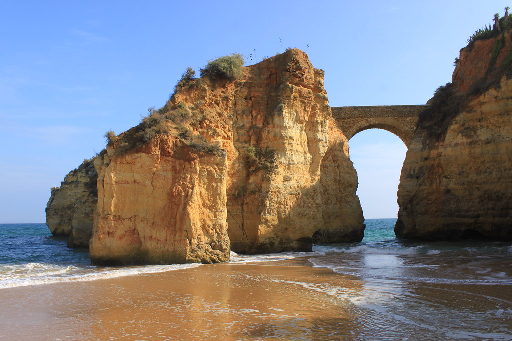
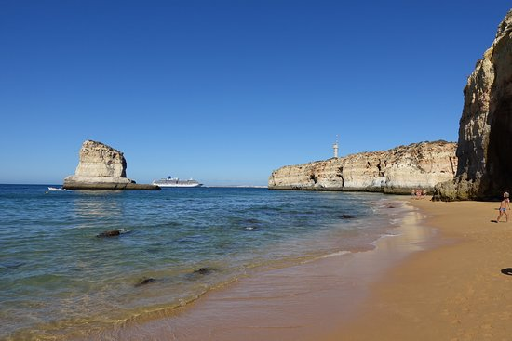
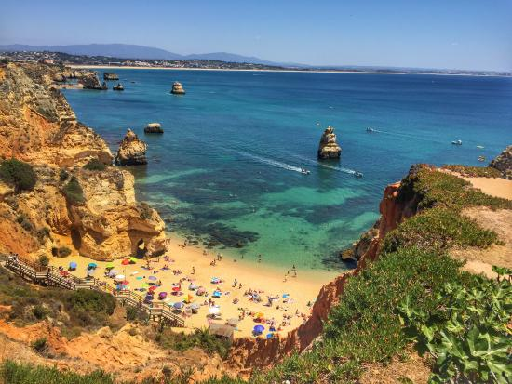

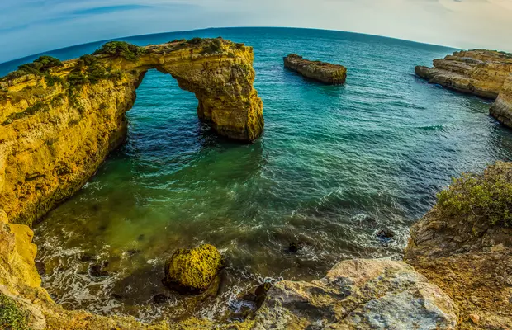
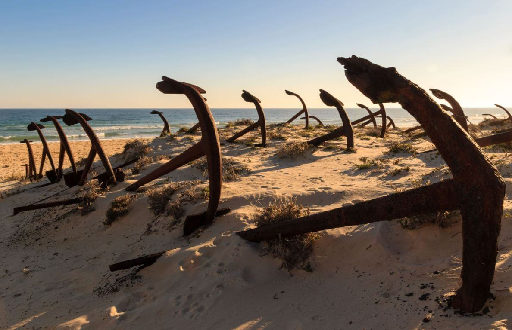
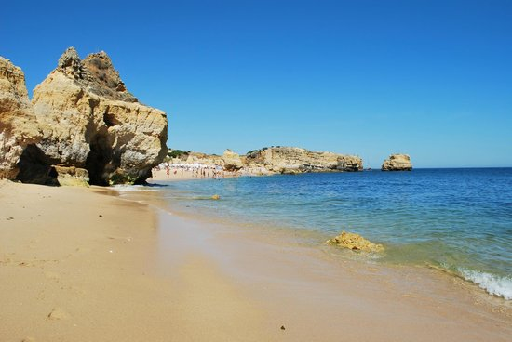
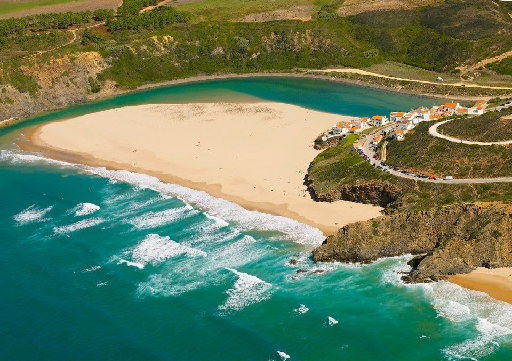


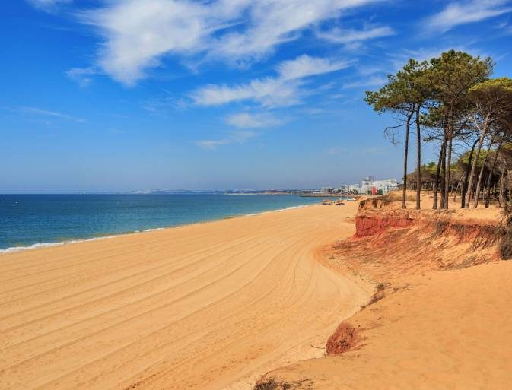
MARINHA BEACH (CARVOEIRO)
It is the most famous in Portugal. In fact, It has been considered several times as one of the most beautiful on the European continent. It is typical of the Algarve, with very clean greenish waters and surrounded by rocky cliffs.
But the most impressive are the two natural arches that the force of the sea has created over the years..
DONA ANA BEACH (LAGOS)
The rock formations that the elements have shaped make this beach a unique landscape. Arriving at Doña Ana Beach, How would the translation in Spanish be?, you will be able to admire from above in its viewpoint all the splendor that unfolds at your feet. Crystalline waters, clear sand and a sandy area shaped by the accompanying cliff. It has a rich marine life that you can admire without having to try too hard.
Services: restaurants, toilets, bar, access stairs, parking, umbrellas and rental of water sports equipment.
BEACH THREE BROTHERS (SERIOUSLY, PORTIMAO)
The beautiful beach of "Tres Hermanos" gets its name from the rock formations that shape its shore. It is located next to the beach of Alvor, being this clearer and that of Três Irmãos more protected from the wind due to the large rocks.
Towards the west side of the beach you will find extensive sandy areas and to the east some beautiful coves that you can explore at low tide.
Services: There is parking next to this beach and some good restaurants.
BARRIL BEACH (TAVIRA)
Barril Beach is located within the Island of Tavira, and you reach it crossing a pedestrian bridge that extends over the estuary (or taking the tourist train). Then you must walk a ceiling of approximately 1 kilometer. Perhaps the distance to travel is what helps this beach to be less crowded during high season. The sandy area is extensive and clear, and if you walk a little more you will reach Praia do Homem Nu, or Naked Man beach, that as you can imagine is an officially nudist beach. A well-known image of this beach is that of the old anchors that are located in one of the beach dunes., They belonged to the tuna boats that used to arrive on this side of the island.
Services: Restrooms and restaurant. Vigilance during high season. (The swell can be a bit rough) If you walk to Praia do Homem Nu there you will not find any type of service.
ARRIFANA BEACH (ALJEZUR)
Arrifana beach is located in the municipality of Aljezur, and is comprised of a wide sandy area that extends over 500 meters. In the background and towards the north side it is protected by a huge rock that defends it from the "nortadas" or the traditional north winds and which also gives it a beautiful appearance.. It is one of the favorite beaches in Algarve for surfing.
Services: Restaurants, toilets, surf lessons, parking and walkways.
ODECEIXE BEACH (ALJEZUR)
Also within the municipality of Aljezur, forming part of the Costa Vicentina, there is the beach of Odeceixe. Paths full of green are followed to get to this beach, that little by little are transformed into boggy land. This beautiful blue flag beach has already been selected years ago as one of the wonders of Portugal. The Seixe river runs and empties to the north side of the beach, creating small lagoons of warm water perfect for children to play. Towards the south of this beach is Praia de Adegas, officially nudist.
Services: Restaurant, toilets, medical post, information, sports equipment rental.
ALBANDEIRA BEACH (LAGOON)
Praia de Albandeira is beautiful, one of our favorites in Algarve. It's small and hidden, what makes it little visited by tourists. It's between Carvoeiro (lagoon) and the Armaçao de Pera beach, in a small rocky cove that is part of the Vale de Engenhos village. The beach is protected by rocks, in fact the sand is divided by them, and the calm water is perfect for swimming.
Services: Bar, parking and bathrooms
CARVOEIRO BEACH (LAGOON)
Awarded as the European Best Beach 2018. This beautiful fishing village is located in Lagoa and is a popular destination for families in the Algarve.
Services: Bar, parking and bathroom
CAMILHO BEACH (LAGOS)
Playa de Camilo or as originally called Praia do Camilo, It is one of the most beautiful beaches that is part of the Ponta da Piedade. To access they must go down some long stairs, so it is not recommended for people with mobility problems.
Services: Restaurant and parking
OLD CACELA BEACH (VILA REAL DE SANTO ANTONIO)
In the lee of the Algarve lies a little paradise. The one that you find it difficult to tell the world about because you would like to keep it a secret forever.
This time we decided to tell them about him, on the condition that they keep it impeccable as is. In the small town of Cacela Velha is the Praia da Fábrica (Factory Beach) or also simply called Playa de Cacela Velha.
To reach it you must cross the Ria Formosa, if it's down on foot, if it's full you should get on a boat.
Services: Parking, restaurants in the villa, the beach is deserted because it is a natural park.
CULATRA ISLAND (FARO)
To get to this piece of Portuguese paradise you must take a boat in Olhão. From the marina you go on a tour of the Ria Formosa where you see other islands such as Armona or Farol, both also with beautiful beaches, until we reach the Isla de la Culatra.
In Culatra you can swim on the beach of the sea or on the beach of the estuary. The public beach that can be reached on foot is fine, but we recommend more those that have access in small boats, like those of the tours that you can see on our Olhão page.
Services: Restaurants in the villa, the beach is deserted because it is a natural park.
BENAGIL BEACH (LAGOON)
Benagil Beach rises at the bottom of a deep valley and is located near the fishing port of Benagil, in Lagoon, the algarve.
Access to this beach leads to the area reserved for artisanal fishing boats, with which excursions are also made to the marine caves and the most inaccessible paradisiacal beaches in the region.
After the colorful boats, the sandy area stretches eastwards until it reaches an imposing ocher-colored cliff on whose walls (very eroded) marine fossils can be seen.
On this beach you can see the exotic rocky patterns typical of this area of the Algarve coast, as well as numerous caves and caves.
STUDENT BEACH (LAGOS)
The beach of Students presents a perfect combination between a transparent sea and yellow and orange rocks that make up strange formations. The beach is visited by photographers from all over the world who come in search of the wild beauty of the rock formations of Lagos. It is also here where you can find the famous bridge that joins two of the most imposing cliffs in Lagos..
There are no bars or restaurants on the beach but there are many in the city of Lagos, which is very close to the beach of Students.
CARVALHO BEACH (LAGOON)
The angular cut of the coast accommodates in its interior a small and cozy sandy area surrounded by ocher rocky walls and heavily worked by erosion. A huge rock marks the center line of the beach and divides the horizon. The line of the cliff remains haughty throughout the length of the beach: access to the sandy area is through a tunnel dug into the rock face, where you can see marine fossils. Someone gladly dug, not just the tunnel, but also countless porticoes and even a comfortable space for a bar, on the cliff face. The ravine that precedes the beach is verdant and shelters dense coastal scrub where juniper predominates., the mastic and the palm, the only palm tree native to Europe. A tangle of sarsaparillas grows profusely on the bushes, that are colored with lichens in the wet season. In calcareous rock exposed to saltpeter, typical cliff plants grow like the colorful asterisk.
PONTA DA PIEDADE BEACH (LAGOS)
An amazing beach, which, you have to go down some long stairs to enjoy it. There is a cave made of the same stone, where spectacular photos are taken. The water is so clear that you can see the fish and the entire seabed. In this area there are no stores to buy, so it is advisable to take a drink and something to eat.
CANEIROS BEACH (LAGOON)
This beach is located behind the Vale da Azinhaga, and it is still visible west of Ponta do Altar and Leixão da Gaivota. The arenal is, Nevertheless, much wider and more extensive, and it is surrounded by cliffs in which alternating stripes of ocher tones can be observed, pinkish and whitish. The rocky walls are badly eroded and corroded by rainwater, and they are lower in the central part of the beach. At the base of the cliff the action of the sea is visible, that forms impressive caves. Vestiges of an ancient collapse can be seen on the east side of the beach, with many rocky blocks already in the water that allow colonization by marine organisms typical of the intertidal strip. In some points, the cliff is found as "cemented", are areas of ash-colored rock, more resistant, here colonized by a great diversity of plants typical of the cliffs: olive thyme, sea fennel, asterisk, alcolecha, caramilla and orzaga.
HALF BEACH (LAGOS)
With extremely fine white sand, Lagos' most popular beach is often a favorite destination for families with young children. It is one of the longest beaches in the Algarve, with an area that spans 5 kilometers between the marina of Lagos and the Ría de Alvor.
There are some restaurants and bars like Quim Bar, Palamares Beach Club o Restaurante Jardim. The main advantage of these restaurants is their proximity to the beach, which makes it possible to have lunch or dinner with a breathtaking view of the Atlantic.